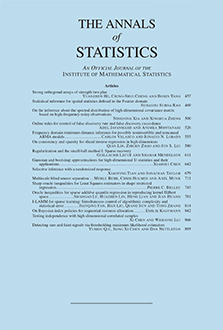Abstract
The concept of breakdown point was introduced by Hampel [Ph.D. dissertation (1968), Univ. California, Berkeley; Ann. Math. Statist. 42 (1971) 1887–1896] and developed further by, among others, Huber [Robust Statistics (1981). Wiley, New York] and Donoho and Huber [In A Festschrift for Erich L. Lehmann (1983) 157–184. Wadsworth, Belmont, CA]. It has proved most successful in the context of location, scale and regression problems. Attempts to extend the concept to other situations have not met with general acceptance. In this paper we argue that this is connected to the fact that in the location, scale and regression problems the translation and affine groups give rise to a definition of equivariance for statistical functionals. Comparisons in terms of breakdown points seem only useful when restricted to equivariant functionals and even here the connection between breakdown and equivariance is a tenuous one.
Citation
P. Laurie Davies. Ursula Gather. "Breakdown and groups." Ann. Statist. 33 (3) 977 - 1035, June 2005. https://doi.org/10.1214/009053604000001138
Information





